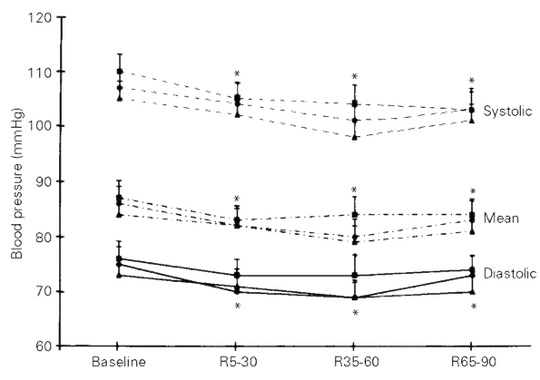Unusual differences between systolic and diastolic pressure may speak for an underlying condition and may be a risk factor for further complications, but can be sometimes normal, for example, in some athletes.
Systolic pressure >140 and diastolic pressure <90 is called isolated systolic hypertension, which can result from peripheral artery disease, heart valve problems, hyperthyroidism, diabetes, etc. (The American Journal of Medicine).
Diastolic pressure >90 and systolic pressure <140 is called isolated diastolic hypertension, which usually results from the hardening of aorta in elderly (Hypertension).
Diastolic pressure <60 and systolic pressure >100 is called isolated diastolic hypotension, which is usually associated with artery hardening in elderly (Hypertension).
Normal diastolic and low systolic pressure is called isolated systolic hypotension, which could result from left heart ventricle failure (Hemodynamics and Cardiology).
Blood pressure changes after exercise:
In healthy individuals, shortly after exercise, both systolic and diastolic pressure tend to drop by about the same extent, as described in the study Post-exercise changes in blood pressure, heart rate and rate pressure product at different exercise intensities in normotensive humans (SciELO):
Most studies dealing with post-exercise blood pressure responses have
demonstrated that exercise reduces blood pressure during the recovery
period. Nevertheless, the magnitude and the time course of blood
pressure changes after exercise are inconsistent.

Picture: Systolic, mean, and diastolic blood pressures at baseline and after exercise (source: SciELO, Creative Commons License)
Pulse Pressure (NCBI Bookshelf)
Pulse pressure is the difference between systolic and diastolic pressure and is normally about 40 mm Hg (120 - 80 = 40).
Pulse pressure is considered low (narrow), when it is <25% of systolic pressure (for example, 110 - 90 = 20). It can occur in impaired heart muscle function after myocardial infarction or in aortic valve stenosis, for example.
Pulse pressure is considered high (wide), when it is >100 mm Hg (for example, 185 - 80 = 105). It can occur in hardening of the arteries or aorta (mainly in elderly) or in aortic valve insufficiency, for example. Pulse pressure can be also increased in severe blood loss, anemia and hyperthyroidism and, not necessary as a sign of a disease, in some well trained athletes.
